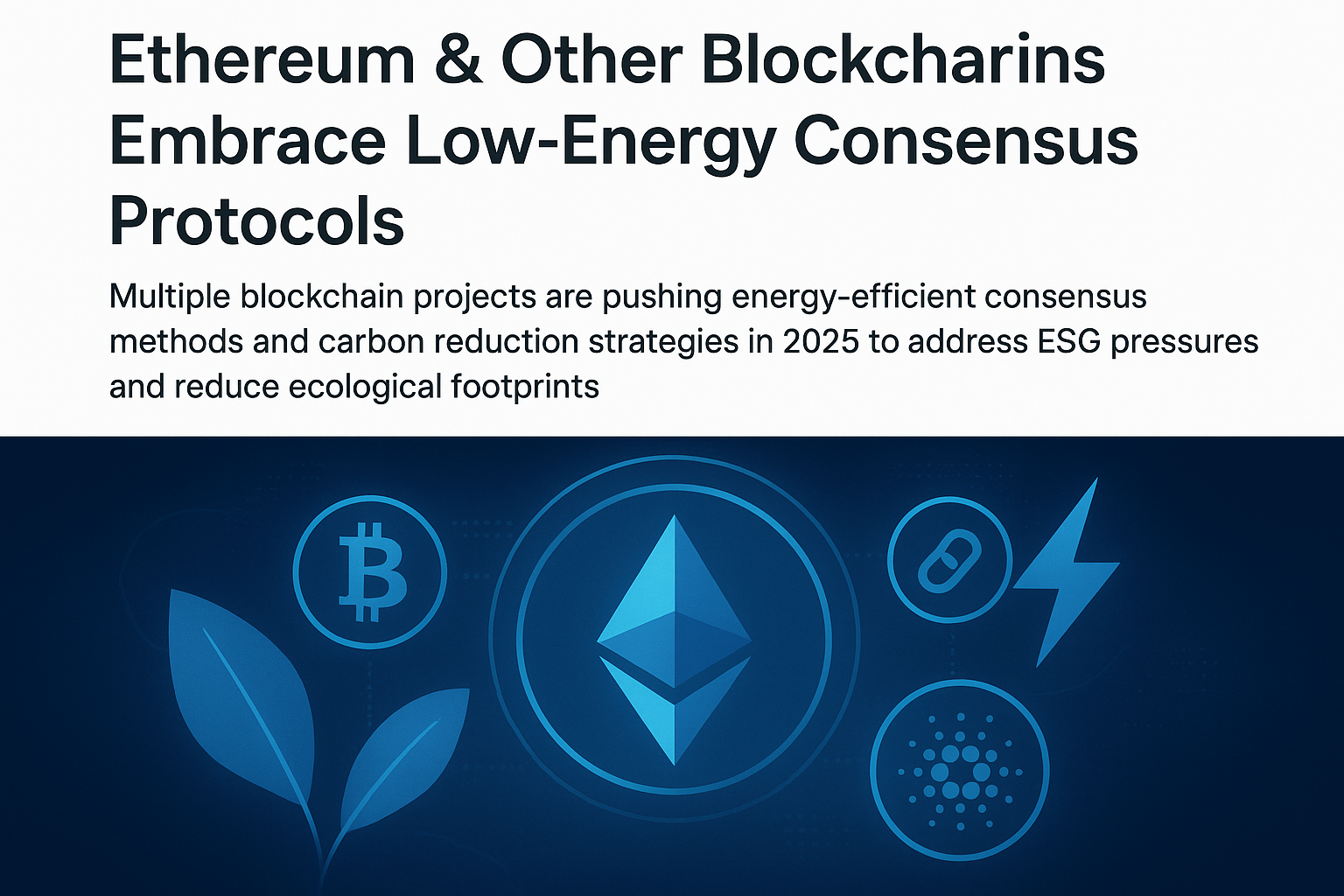In 2025, the blockchain ecosystem is witnessing a decisive shift toward sustainability, as major projects adopt low-energy consensus protocols to meet environmental, social, and governance (ESG) expectations. The growing awareness of climate change, coupled with increasing scrutiny from regulators and investors, is driving blockchain networks to rethink how they validate transactions and secure their networks without draining massive amounts of energy.
Ethereum, the second-largest blockchain by market capitalization, has been at the forefront of this trend. Following its historic transition from Proof-of-Work (PoW) to Proof-of-Stake (PoS) several years ago, Ethereum has already reduced its energy consumption by over 99%. This shift not only addresses environmental concerns but also opens the door for more scalable, faster, and cost-efficient transactions. Ethereum’s ongoing development continues to refine PoS and explore hybrid consensus models that further reduce the network’s carbon footprint while maintaining decentralization and security.
Beyond Ethereum, a wide array of blockchain projects is embracing low-energy consensus protocols. Proof-of-Stake, Delegated Proof-of-Stake, and other innovative mechanisms are replacing energy-intensive mining operations traditionally associated with Proof-of-Work. These protocols significantly reduce electricity consumption, making blockchain technology more sustainable and appealing to institutional investors concerned with ESG compliance.
The push toward greener blockchains is also influencing ancillary industries, from cryptocurrency exchanges to decentralized finance (DeFi) platforms. Exchanges like Bitget are increasingly promoting energy-efficient tokens and networks, highlighting environmental considerations as part of their platform offerings. This trend demonstrates that sustainability is becoming a core factor in user adoption, investor decisions, and corporate strategy in the crypto space.
Moreover, blockchain developers are experimenting with carbon offsetting mechanisms, including staking rewards tied to verified green projects and collaborations with renewable energy providers. These initiatives aim to ensure that blockchain operations not only minimize energy use but actively contribute to global carbon reduction efforts.
As the industry progresses, low-energy consensus protocols are no longer just a technical consideration—they are a strategic imperative. ESG pressures, coupled with regulatory frameworks emerging worldwide, make sustainability a necessity rather than an option. Blockchains that fail to innovate in this direction may face investor skepticism, regulatory hurdles, or reduced adoption.
In conclusion, 2025 marks a pivotal year for energy-efficient blockchain technology. Ethereum and other networks adopting low-energy consensus protocols exemplify how the cryptocurrency industry can align innovation with environmental responsibility. By reducing ecological footprints and promoting sustainable practices, these blockchains are not only securing digital assets but also contributing to the broader global goal of combating climate change. The integration of ESG-focused strategies and low-energy technologies represents a turning point—one where the future of blockchain is not just fast, secure, and decentralized, but also green.




